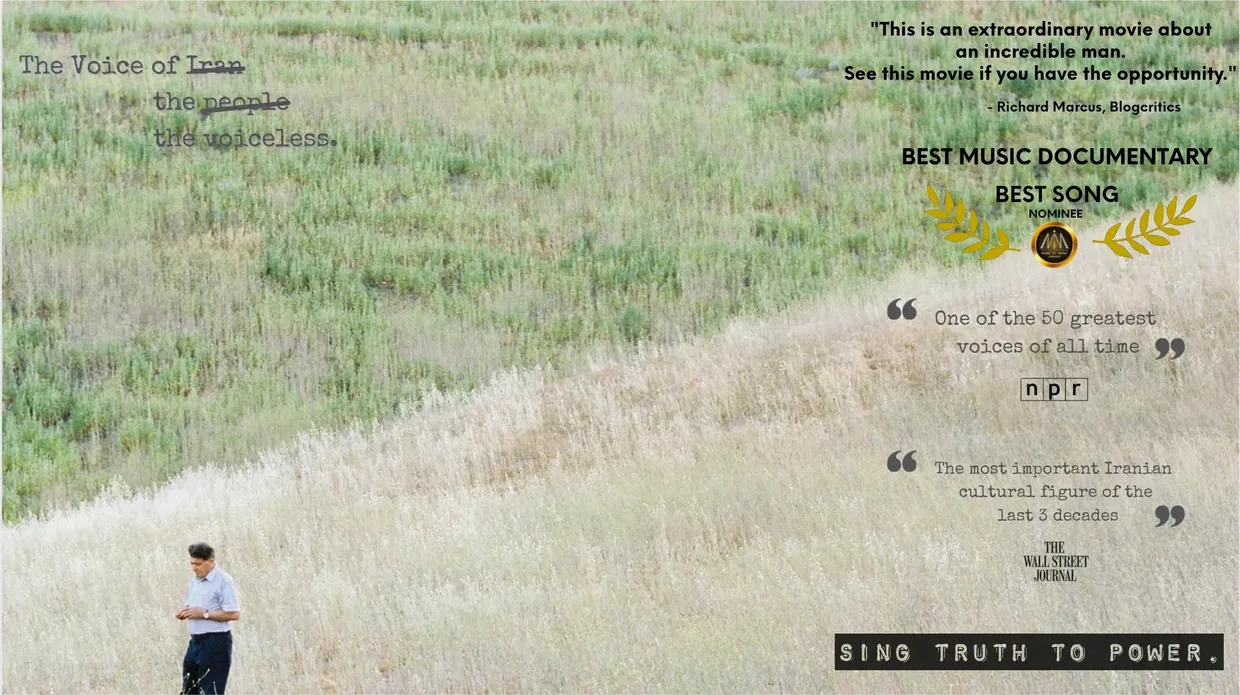Maestro Mohammad Reza Shajarian
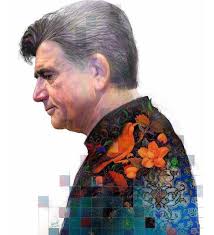
Mohammad-Reza Shajarian (Persian: محمدرضا شجريان; Persian pronunciation: [mohæmːæd ɾeˈzɒː ʃædʒæɾiˈɒːn]) (23 September 1940) was an Iranian classical singer, composer and Ostad (master) of Persian traditional music. He is considered “Iran’s greatest maestro of Persian classical music.” Shajarian was also known for his skills in Persian calligraphy, and humanitarian activities.
Shajarian was considered as one of the most celebrated world music artists. His singing is widely believed to be technically flawless, powerful, and strongly emotional. In Persian classical Dastgah music, singing is the most difficult art to master and Shajarian is the embodiment of the perfect singer and a major source of inspiration. In 1999 UNESCO in France presented him with the prestigious Picasso Award, one of Europe’s highest honors.
Shajarian was born in Mashhad, Iran, and started singing at the age of five, under the supervision of his father. At the age of twelve, he began studying the traditional classical repertoire known as the Radif. Shajarian started his singing career in 1959 at Radio Khorasan, rising to prominence in the 1960s with his distinct style of singing. His main teachers were Ahmad Ebadi, Esmaeil Mehrtash, Abdollah Davami, and Nour-Ali Boroumand. He also learned the vocal styles of singers from previous generations, including Reza Gholi Mirza Zelli, Fariborz Manouchehri, Ghamar Molouk Vaziri, Eghbal Azar, and Taj Isfahani. He has cited legendary Iranian tar musician Jalil Shahnaz as highly influential to his development, indicating that he has often tried to mimic Shahnaz’s playing style in his singing.
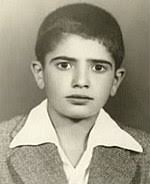
Shajarian has collaborated with Parviz Meshkatian, Mohammad Reza Lotfi, Hossein Alizadeh, and Faramarz Payvar. He was recognised as skilled singer in the challenging traditional Dastgah style. In 1999 UNESCO in France presented him with the Picasso Award and in 2006 with the UNESCO Mozart Medal.
Shajarian was the undisputed master of Persian traditional (classical) singing. He is regarded as a national treasure by both musicians and music lovers. His singing is technically flawless, powerful, and strongly emotional. In music of Iran, traditional singing is the most difficult art to master. Shajarian was the embodiment of the perfect singer and a major source of inspiration.
Born in 1940 in the city of Mash’had in northeastern Iran, Mohammad Reza Shajarian began singing spiritual songs at the age five under the supervision of his father. Only a few years later his precocious talent was to be renowned throughout the town of Mash’had. In spite of his religious upbringing, at the age of twelve he was familiarizing himself with the traditional song repertoire and the first piece he was to sing was the Gham-Angiz Goosheh of Dashti. He was also interested at the same time in popular music from Khorasan and the other regions of Iran. His focus at first was on the local folk music of his native province, Khorasan, but later at the age of twelve he studied the traditional repertoire, the Radif.
History

Early work
Shajarian studied singing at the early age of five under the supervision of his father by recitation of the Quran. At the age of twelve, he began studying the Persian traditional classical repertoire known as the Radif without his father’s consent as studying and performing music was against his father’s religious beliefs. May be that’s why he chose the stage name “Siavash Bidakani” in his early career as a singer, which didn’t last long and soon he used his real name again. Shajarian started his singing career in 1959 at Radio Khorasan, rising to prominence in the 1960s with his distinct style of singing. Since then his career has included teaching at Tehran University’s Department of Fine Arts, working at National Radio and Television, researching Iranian music, and making numerous recordings.
Masters
Shajarian studied with Esmaeil Mehrtash, Ahmad Ebadi, and Nour-Ali Boroumand and learned the vocal styles of previous generations of singers such as Seyed Hossein Taherzadeh, Reza Gholi Mirza Zelli, Ghamar Molouk Vaziri, Eghbal Azar, and Taj Isfahani. He started playing the santour under the instruction of Jalal Akhbari in order to better understand and perform the traditional repertoire. In 1971, he was introduced to Faramarz Payvar and took santour lessons with him. Shajarian also learned Abolhasan Saba’s vocal Radif from Payvar. He also studied under the guidance of master Abdollah Davami, from whom he learned many early Persian songs. Abdollah Davami also passed on to Shajarian his own interpretation of the Radif.
Music bands
Shajarian has not always been in music groups, he did the vocals for the Masters of Persian Music with his son Homayoun Shajarian, as well as two other ostads, Kayhan Kalhor and Hossein Alizadeh. He also performed with his daughter Mozhgan Shajarian.
In 2008, he toured the world with the Ava Ensemble, composed of his son Homayoun (tombak and vocals), Hossein Behroozinia (barbat), Majid Derakhshani (tar), Hossain Rezaeenia (daf), and Saeed Farajpouri (kamanche).[7]
In 2012, he toured with the Shahnaz Ensemble with his daughter Mojgan Shajarian and other band members. The ensemble is named after master tar musician Jalil Shahnaz, with a percentage of the proceeds going towards supporting his health care needs.
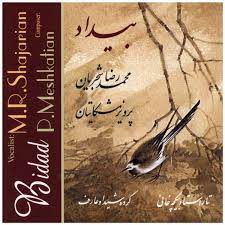
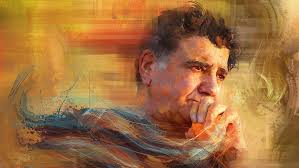
Compassion for Bam, Benefit Concert at the Art garden
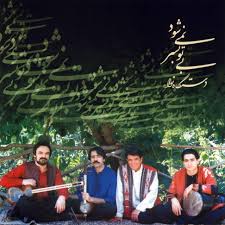
On December 26, 2003, the ancient city of Bam in south Iran – which is on the UNESCO list of world heritages on the account of its unique mud-brick architecture – was hit with a devastating earthquake; it severed and killed tens of thousands and ruined the city. As Mohammad Reza Shajarian had decided through the occurrences of the previous natural disasters in Iran, he organized another benefit concert by the following month which is notably documented on the DVD Hamnava ba Bam (“Compassion for Bam”) that is released on Delnawaz. Apart from the concert, he initiated a project to help the people after the earthquake.
Political protest
Shajarian’s Bidaad album was recorded after a three-year hiatus from commercial recording. The lyrics of the album speak of a wonderful place having been reduced to shambles and bloodshed, in which he sings in sadness “what happened?”. When giving a lecture at California State University, Sacramento on March 2, 2012, he was asked what the lyrics of this song meant. His response made it clear that he chose these lyrics based on what happened to the Iranian regime in the aftermath of the revolution – a once beautiful country being reduced to shambles. This is widely considered his first commercial recording meant to represent the voice of an oppressed people in Iran.
Shajarian has indicated support for Iranians protesting against the 12 June 2009 Iranian presidential election results. When Iran’s president, Mahmoud Ahmadinejad referred to the protesters as “dust and ash”, Shajarian told a BBC Persian channel telephone interviewer that he (Shajarian) considered himself the voice of dust and ash: “It is the voice of dust and ash and it will always remain the voice of dust and ash.” He also asked IRIB (Islamic Republic of Iran Broadcasting) to stop broadcasting his songs. He mentioned that his famous song “Iran, Ey Saraye Omid” (Iran, the land of Hope), has no relation with the current situation of his country.
Lyrics of his song “Language of Fire,” issued in September 2009, — “Lay down your gun, Come, sit down, talk, hear. Perhaps the light of humanity will get through to your heart too” — are thought by some observers to speak “directly to the plainclothes Basiji militiamen and security forces” who beat protesters during recent unrest.
WIPO grants medal to late Iranian maestro Shajarian
World Intellectual Property Organization awarded the WIPO Medal for Creativity to the late Iranian traditional Persian vocalist, Mohammad Reza Shajarian in appreciation of his valuable achievements in the field of traditional music and Persian culture.
WIPO’s Medal for Creativity is awarded to influential artists who have played a crucial role in the cultural and artistic development and their initiatives and activities have had a significant impact on promoting respect for creative works.
Inspiring the artistic community and the capacity to serve as a role model for artists are some of the criteria for awarding this medal.
The legendary Iranian vocalist received numerous awards. In 1999, UNESCO presented him with the prestigious Picasso Award, one of Europe’s highest honors.
According to his will, his body was moved to the city of Tous and was laid to rest on October 10 next to the tomb of the great Iranian poet Ferdowsi.
Shajarian was the undisputed master of Persian traditional (classical) singing and is regarded as a national treasure by both musicians and music lovers.
He was perhaps Iran’s most diverse and prolific singer of all time and has a huge repertory of recorded works.
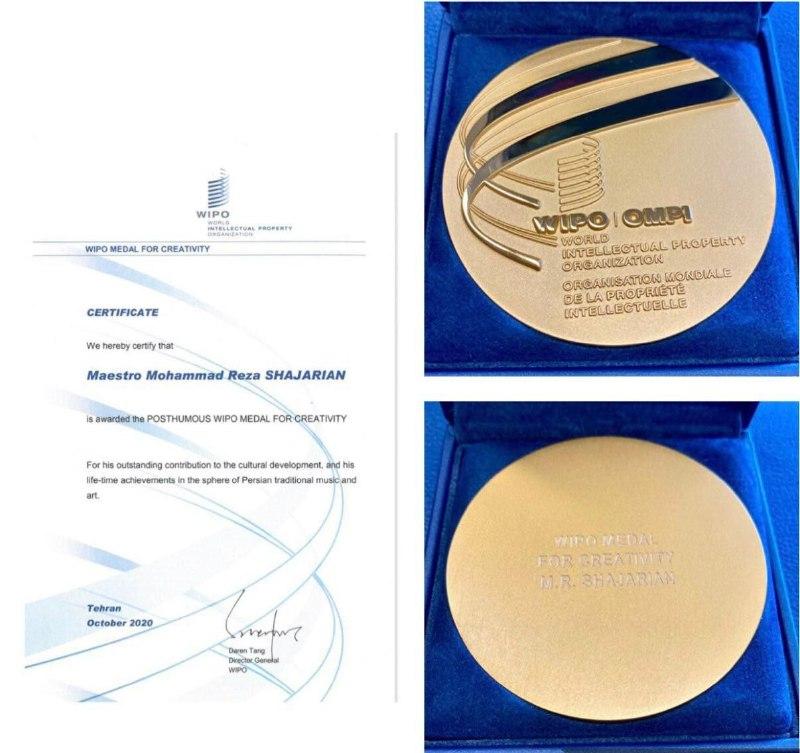
See below for a list of Mohammad Reza Shajarian’s GRAMMY Awards history.
2009
International Mevlana (Rumi) Foundation Award of Honor
2010
Certificate of Proclamation from the City of Huston
2010
Certificate of Tribute from the City of Los Angeles
2010
BITA Award of the Center of Iranian Studies at Stanford University
1976
Prize Presented by Turkish Parliament Speaker
National Radio and Television Golden Cup
2011
Recognition of Recognition for Significant Contribution to Registering Iranian Traditional‘Radif ’as World Human Heritage
Best Album of the Two Decades of Persian Music for ‘Dastan’
1999
Recognition of Recognition by Ministry of Islamic Culture and Guidance
2000
Iran’s Best Classical Vocalist
2003
Certificate of Recognition of Nomination for Best Traditional World Music Al- bum in 46th GRAMMY Awards, National Academy of Recording Arts & Sciences
2008
Nushin Medal of Recognition by Chamber of Iranian Actors




